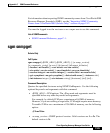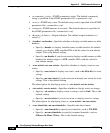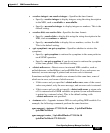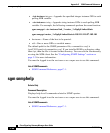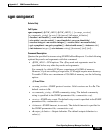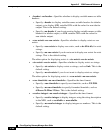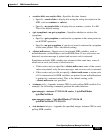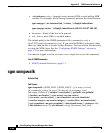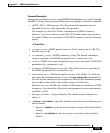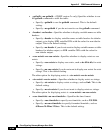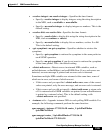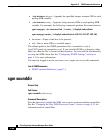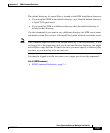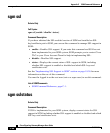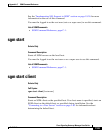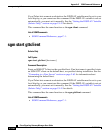
C-93
Cisco Signaling Gateway Manager User Guide
OL-5742-01
Appendix C SGM Command Reference
sgm snmpwalk
Command Description
Queries the specified hostname, using SNMP GetNextRequests to “walk” through
the MIB. Use the following optional keywords and arguments with this command:
• -JJVM_ARG1—JVM options. The -J keyword and arguments must be
specified before any other keywords and arguments.
For example, by default JVM uses a maximum of 64 MB of memory.
However, if you are walking a large table, JVM might require more memory.
To enable JVM to use a maximum of 256 MB of memory, use the following
option:
-J-Xmx256m
• -v snmp_version—SNMP protocol version. Valid versions are 1 or 2c. The
default version is 2c.
• -c community_string—SNMP community string. The default community
string is specified in the SNMP parameters file, communities.conf.
• -r retry—SNMP retry count. The default retry count is specified in the SNMP
parameters file, communities.conf.
• -t timeout—SNMP timeout, in seconds. The default timeout is specified in
the SNMP parameters file, communities.conf.
• -x maximum_rows—Maximum number of rows to be walked. If a table has
more than the maximum number of rows, the sgm snmpwalk command fails.
You can use the -m keyword and argument to increase the maximum number
of rows that can be walked. The default setting is 10,000 rows.
However, for every 10,000 rows walked, JVM requires an additional 10 MB
of memory. You can use the -J keyword and argument to increase the memory
available to JVM.
• -d output_delimiter—Output delimiter. The default output delimiter is a
colon (:).
• --tabular|--no-tabular—Specifies whether to print the result of the query in
tabular format:
–
Specify --tabular to print the result in tabular format. This is the default
setting.
–
Specify --no-tabular if you do not want to print the result in tabular
format.



